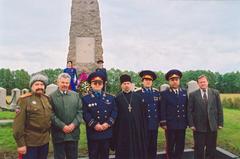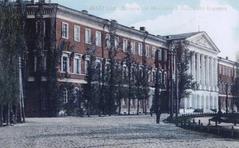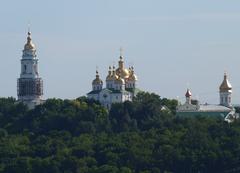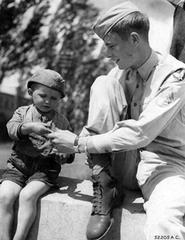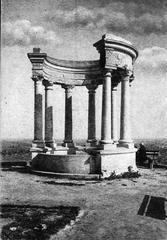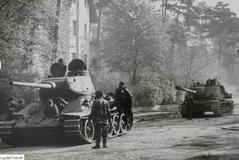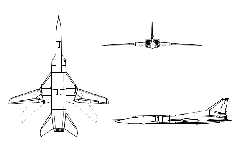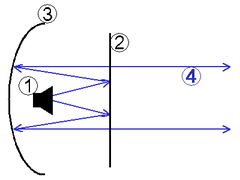Visiting Monument Slavy in Poltava: A Comprehensive Guide
Date: 24/07/2024
Introduction
The Монумент Слави, or Glory Monument, in Poltava, Ukraine, stands as a powerful testament to the city’s rich historical tapestry and cultural heritage. This neoclassical structure was erected to commemorate the 100th anniversary of the Battle of Poltava, a pivotal event that occurred on June 27, 1709, fundamentally altering the course of European history. Under the leadership of Tsar Peter I, the Russian forces secured a decisive victory over the Swedish army led by Charles XII, marking a turning point in the Great Northern War and establishing Russia as a preeminent European power (battle-poltava.org.ua).
The monument itself is an architectural marvel, designed by the distinguished architect Andrey Voronikhin and completed in 1811. It features a 16-meter cast-iron column topped with a gilded eagle, symbolizing victory and dominance. The bronze bas-reliefs on the granite pedestal, crafted by sculptor Ivan Martos, vividly depict significant scenes from the Battle of Poltava (battle-poltava.org.ua).
This comprehensive guide aims to provide visitors with essential information to make the most of their visit to this iconic site. From historical insights and architectural details to practical visitor tips and nearby attractions, this article covers everything you need to know about the Монумент Слави. Whether you’re a history enthusiast or a casual traveler, this guide will help you appreciate the monument’s significance and enjoy your visit to Poltava.
Table of Contents
- Introduction
- History of Монумент Слави
- Visitor Information
- Preservation Efforts
- Cultural Impact
- FAQ
- Conclusion
History of Монумент Слави
Origins and Construction
The Монумент Слави was erected to commemorate the 100th anniversary of the Battle of Poltava. The Battle of Poltava, which took place on June 27, 1709, marked a decisive victory for Tsar Peter I of Russia over the Swedish forces led by Charles XII. This battle turned the tide in the Great Northern War and established Russia as a major power in Europe.
The idea for the monument was conceived in the early 19th century, and its construction began in 1805. The project was overseen by renowned architect Andrey Voronikhin, known for his work on the Kazan Cathedral in St. Petersburg. The monument was completed in 1811 and officially unveiled in 1812. The design of the monument is neoclassical, featuring a tall column topped with a gilded eagle, symbolizing the Russian Empire’s victory and dominance.
Architectural Features
The Монумент Слави stands at an impressive height of 16 meters (approximately 52 feet). The column is made of cast iron and rests on a granite pedestal. The pedestal is adorned with bronze bas-reliefs that depict scenes from the Battle of Poltava, including the surrender of the Swedish army and the triumph of the Russian forces. These bas-reliefs were crafted by the sculptor Ivan Martos, who was also responsible for the famous monument to Minin and Pozharsky in Moscow’s Red Square.
At the top of the column is a gilded eagle with outstretched wings, holding a laurel wreath in its beak. The eagle symbolizes victory and power, and the laurel wreath represents honor and glory. The base of the monument features inscriptions in Russian, commemorating the heroes of the Battle of Poltava and the significance of their victory.
Visitor Information
Visiting Hours and Tickets
The Монумент Слави is open to visitors year-round. The typical visiting hours are from 9:00 AM to 6:00 PM. Admission to the site is free, making it an accessible historical attraction for all visitors.
Guided Tours
To gain a deeper understanding of the monument’s history and significance, consider joining a guided tour. Local guides can provide valuable insights and anecdotes about the Battle of Poltava and the monument’s construction. You can find top-rated tours and activities in Poltava here.
Best Times to Visit
The best time to visit the monument is during the summer months of June, July, and August when the weather is warm and pleasant. The surrounding gardens are in full bloom, providing a beautiful backdrop for the monument. For more information on the best time to visit Poltava, check out this travel guide.
Photography
The Монумент Слави is a popular spot for photography, especially during sunset when the golden light enhances the monument’s grandeur. Don’t forget to bring your camera to capture the stunning views.
Nearby Attractions
While in Poltava, take the opportunity to explore other historical landmarks such as the Poltava Battle Museum, the Ivan Kotlyarevsky Museum, and the Holy Cross Exaltation Monastery. These sites offer a comprehensive overview of Poltava’s rich history and cultural heritage. More details on these attractions can be found here.
Local Cuisine
After visiting the monument, indulge in some traditional Ukrainian cuisine at one of the local restaurants. Poltava is known for its delicious dishes, including borscht, varenyky (dumplings), and holubtsi (stuffed cabbage rolls). For recommendations on where to eat, check out this culinary guide.
Preservation Efforts
The Монумент Слави has undergone several restoration projects to preserve its structural integrity and historical accuracy. In recent years, efforts have been made to clean and repair the monument, ensuring that it remains a prominent symbol of Poltava’s heritage. These preservation efforts are crucial in maintaining the monument’s significance for future generations. Local authorities and cultural organizations have also implemented measures to protect the monument from environmental damage and vandalism. Visitors are encouraged to respect the site and adhere to guidelines to help preserve this important historical landmark.
Cultural Impact
The Монумент Слави holds a special place in the hearts of Poltava’s residents and visitors. It serves as a reminder of the city’s historical importance and the bravery of those who fought in the Battle of Poltava. The monument is often the focal point of cultural events and celebrations, including Victory Day commemorations and historical reenactments.
In addition to its historical significance, the monument has inspired various works of art, literature, and music. It is a symbol of national pride and resilience, reflecting the enduring spirit of the Ukrainian people.
FAQ
Q: What are the visiting hours for Монумент Слави? A: The typical visiting hours are from 9:00 AM to 6:00 PM.
Q: How much does it cost to visit Монумент Слави? A: Admission to the site is free.
Q: What are the best times to visit Монумент Слави? A: The best time to visit is during the summer months of June, July, and August.
Conclusion
The Монумент Слави in Poltava is more than just a historical landmark; it is a symbol of national pride and resilience, reflecting the enduring spirit of the Ukrainian people. Its rich history, stunning architecture, and cultural significance make it a must-visit destination for anyone interested in the heritage of Ukraine. The monument offers a profound glimpse into the past, commemorating the bravery of those who fought in the Battle of Poltava and the city’s pivotal role in European history (battle-poltava.org.ua).
Beyond its historical importance, the monument is a focal point for community and cultural events, fostering a sense of shared heritage among locals and visitors alike. Preservation efforts ensure that this iconic site remains a testament to Poltava’s rich legacy for future generations. When planning your visit, take advantage of the free admission, guided tours, and the beautiful surrounding gardens, especially during the summer months (ua.igotoworld.com).
By immersing yourself in the history and cultural significance of the Монумент Слави, you gain a deeper appreciation of Poltava’s role in shaping the past and its ongoing efforts to celebrate and preserve its heritage. For more information and updates on historical sites and travel tips, follow us on social media or download the Audiala mobile app.
